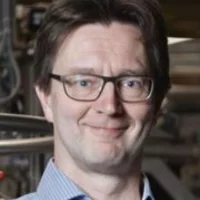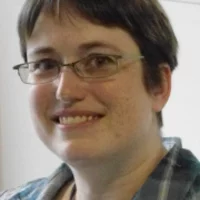Biography
Andaç Özsoy is doctoral researcher in the Structure and Mechanics of Advanced Materials group. He received both his bachelor's and master's degree in Metallurgical and Materials Engineering at Middle East Technical University, Turkey. During his MSc, he focused on laser powder-bed fusion (LPBF) of metal matrix composites for improved high-temperature mechanical properties, with a specific focus on space applications. He investigated the changes in the LPBF processing window associated with the incorporation of ceramic particles into the powder feedstock as well as the resulting microstructural and mechanical properties. During his master's studies, Andaç also worked full-time in industry and has experience in other metal additive manufacturing methods such as electron beam melting (EBM) and wire-arc additive manufacturing (WAAM). He joined the SMAM group in 2022 to study the influence of process parameters on the microstructural evolution during multi-material LPBF using operando synchrotron X-ray diffraction and imaging.
Scientific Research
Andaç's research focuses on multi-material metal additive manufacturing, in particular in-situ and operando characterization of multi-materials during laser powder-bed fusion (LPBF) process using X-ray diffraction. Understanding the thermophysical and microstructural changes that occur during LPBF of dissimilar materials is crucial for tuning the process parameters. Obtaining tailored part properties based on the application requirements relies on manipulation of these process dynamics. Andaç's interests include novel manufacturing methods, mechanical testing, advanced characterization techniques and thermomechanical metallurgy in general.
Selected Publications
Ozsoy, A., Yasa, E., Keles, M. & Tureyen, E. B. Pulsed-mode Selective Laser Melting of 17-4 PH stainless steel: Effect of laser parameters on density and mechanical properties. J. Manuf. Process. 68, 910–922 (2021).
Selective laser melting (SLM) using pulsed-wave lasers has profound differences in terms of process parameters and dynamics compared to SLM processing using continuous-wave lasers, which are employed in most SLM equipments. This study involves SLM process parameters development with a pulsed-wave laser using a design of experiments approach. Unique factors of the pulsed laser processing have been taken into account in addition to other process parameters and their interactions to clarify the most influential process variables on the outputs. It is found that the areal energy density distribution should be correctly evaluated to understand the delivery of energy by the pulsed laser to the powder-bed in order to select the optimal parameters correctly. In addition, phase constitution has been found to be an important factor for parameters development of multi-phase materials, affecting the theoretical density which is used to calculate per cent relative density.
Ozsoy, A., Tureyen, E. B., Baskan, M. & Yasa, E. Microstructure and Mechanical Properties of Hybrid Additive Manufactured Dissimilar 17-4 PH and 316L Stainless Steels. Mater. Today Commun. 28, 102561 (2021).
Wire-arc additive manufacturing (WAAM) and laser powder bed fusion (L-PBF) technologies were combined utilizing dissimilar metals for each process. Deposition of AISI 316L stainless steel on previously L-PBF manufactured 17-4 PH stainless steel part was successfully executed using WAAM process. Microstructural observations showed five different zones in the as-built state whereas a uniform microstructure was obtained following the heat treatment. Moreover, the depth of phase transformation zone has been closely predicted by thermal simulation. Tensile tests were conducted on the specimens extracted from the L-PBF/WAAM interface and the results exceeded the standard strength requirements with a minor decrease in ductility.
Ozsoy, A., Aydogan, E. & Dericioglu, A. F. Selective laser melting of Nano-TiN reinforced 17-4 PH stainless steel: Densification, microstructure and mechanical properties. Mater. Sci. Eng. A 142574 (2021) doi:10.1016/j.msea.2021.142574.
In this study, a TiN-reinforced variant of 17-4 PH stainless steel was produced by selective laser melting (SLM). It was aimed to utilize nano-sized TiN particles both as inoculants to obtain an equiaxed microstructure in as-built condition and as dislocation barriers to improve mechanical properties. SLM process parameters development has been conducted for TiN-reinforced 17-4 PH stainless steel powders and the changes in process window have been reported. TiN-reinforced composites exhibited a very fine and equiaxed microstructure, effectively eliminating directional solidification and consequent anisotropy. Both strength and ductility in as-built condition have increased significantly for the TiN-reinforced composites.
Yasa, E., Ozsoy, A. & Tureyen, E. B. The Laser Powder Bed Fusion Process Development of 17-4 PH Stainless Steels with Pulsed-Wave Lasers. in 2021 International Solid Freeform Fabrication Symposium (University of Texas at Austin, 2021). doi:10.26153/TSW/17609.
Among various differences between different LPBF machines, the type of laser (continuous or pulsed-wave) is the most critical one. In addition to several process parameters to be optimized for a specific material, pulsed-wave lasers bring extra factors to consider. In this work, a pulsed- wave laser was used to develop process parameters for 17-4 PH stainless steel while keeping volumetric energy density, laser power and velocity constant to understand the effect of only pulse-related parameters on the outputs. As the point distance (PD) between consecutive laser spots was increased, the exposure time was also raised to keep the scan speed constant. This enabled achieving PDs with one extreme end approaching CW-lasers while the other end aiming at keyhole effect.


